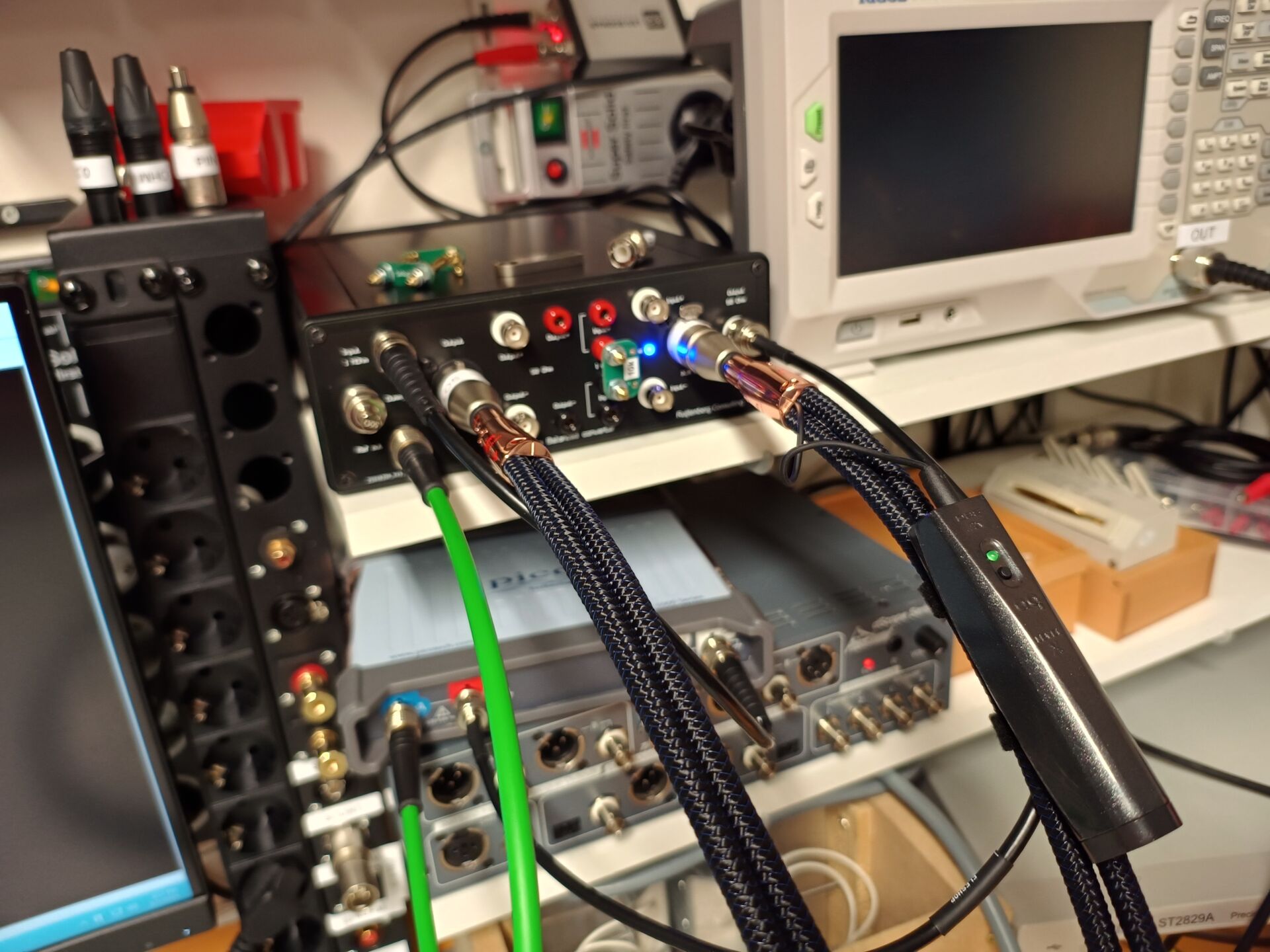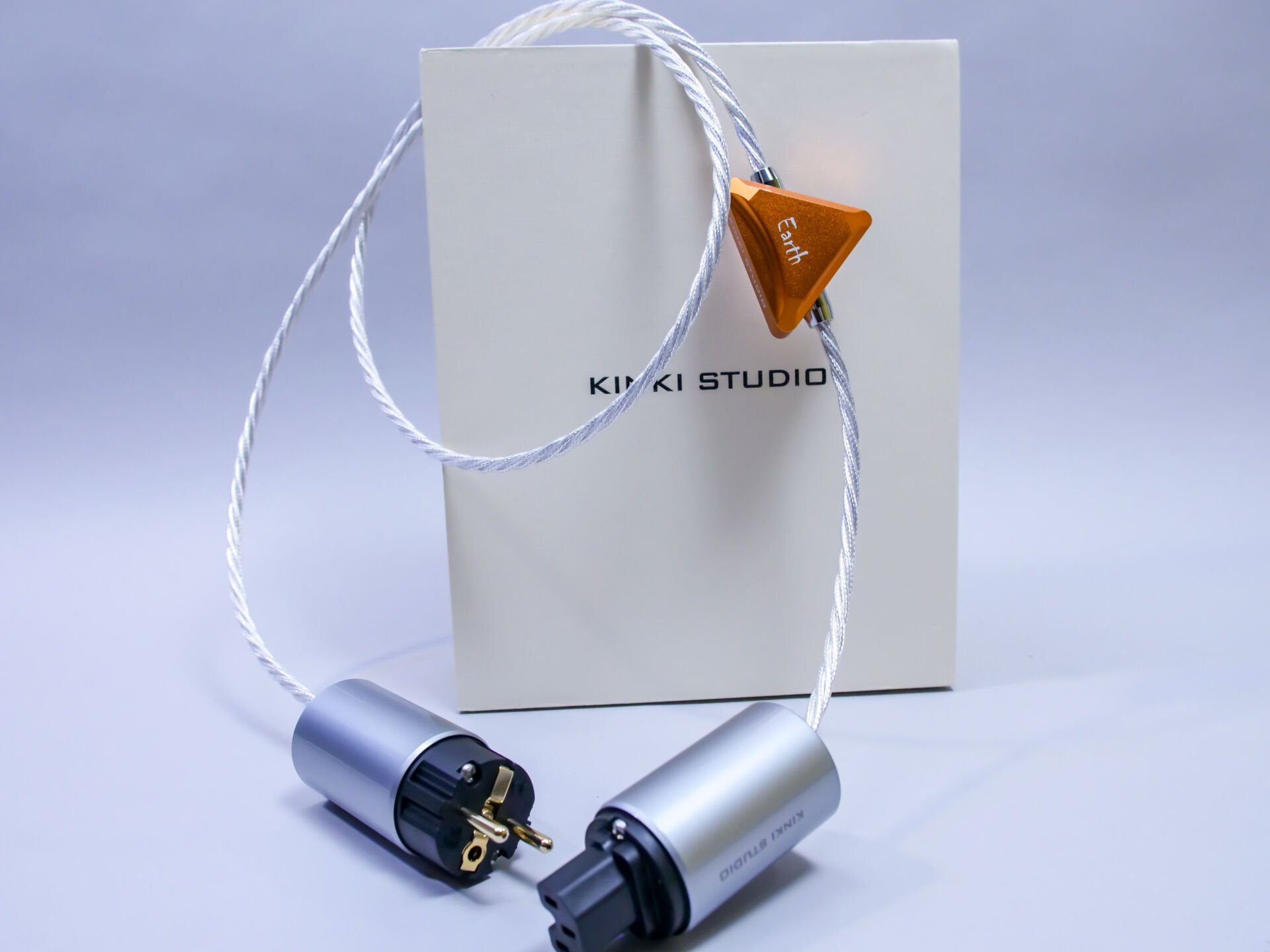

With the arrival of the Prism dScope III and the digital scope, we started measuring more at Alpha Audio. We consider these objective findings to be an enrichment of the content, because it also shows whether manufacturers are working in a somewhat thorough manner. For example: do they meet the specifications mentioned? How does a device deal with common mode rejection? Et cetera. With cables it is complex. However, there is a standard test for digital interlinks: an eye pattern test. We turn on the Prism dScope III and connect the Rigol on the output as well. Let’s go!
We took some cables from our in house stock: the 1 meter Audioquest Diamond, the 2 meter Audioquest VDM3, a 1 meter Ixos 104 digital interlink, a 75 centimeter Art Speak solid core silver and a 1 meter Albedo BNC cable for comparison. We tested the Audioquest Diamond with and without the DBS system to see how it affected these measurements. It was initially purely for learning and amusement…. Now in this test we did not do any listening tests. That may come later if you find that interesting too. Now we do not have the time; this test and this article was already not planned and it is actually much too busy :-). However, these measurements do give an interesting insight into Audioquest’s DBS system….
Eye pattern test
In an eye pattern test, the Prism sends a digital measurement signal through the cable. The tighter the line and the better the ‘eye’ stays clear, the better the cable does its job. As you can see, the measurement per cable is slightly different. One is tighter and more open than the other. However, the differences are still fairly minimal. Until we get to the AQ Diamond and turn on DBS (plug it in). That measurement is a lot less nice and tight than the measurement with this system turned off. In the measurement with DBS switched on, the lines are almost against the eye in the second and third segment.
Digital signal on the scope
We also put the eye pattern measurement on the scope to see how the square wave comes out. And then things do become clearer. In particular, the Art Speak shows a remarkably tight square wave. And that also shows a neat eye pattern in the above measurements. The AQ diamond without DBS shows a better square wave than the version with DBS enabled. That, frankly, is just wrong. It’s almost not a square wave anymore. We are beginning to wonder why this system was added. And what this does on a speaker cable and analog interlink.
Kind of wacky
To get some more insight in whether this can also be measured at the output of a dac, we do two extra measurements: one in which we connect the Audioquest Diamond as coax between the Prism dScope and our Sonnet Pasithea dac. Next, we set up the analog outputs on the Rigol scope. We send in a simple square wave. You can see that by itself the outgoing signal is not affected. That’s positive, but that will be mainly due to how well a dac can deal with jitter. Modern dacs are now pretty good at eliminating jitter. Older dacs are not. There it will probably be visible.
However, if we use the AQ Diamond as analog output cable – which is of course not recommended, but in this case done purely for testing – we see that DBS also affects the analog sine wave. We have put a standard IXOS coax interlink in yellow above it. You can see that the sine with DBS on is rounder than without DBS on. In short: it ‘slows down’. And yes: that will certainly sound different… the question is what is desirable.
What does this do?
As said, we have not done a direct listening test with these digital interlinks. The question is also how audible it will be. Usually it is about very subtle differences in digital cables. However, we can say with certainty that the AQ Diamond with DBS enabled adds jitter: the eye pattern measurement is worse, which indicates jitter. In short: the input receiver of the dac has to work hard to get rid of the jitter. And that can be audible at the output.
It can manifest itself in more ‘freshness / sharpness’, a blurred stereo image (which may seem larger) or perhaps a woolly layer. All side effects of jitter. In short: in certain cases it will certainly be different. And incredibly dependent on the dac.























